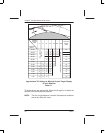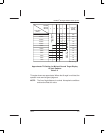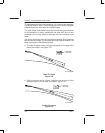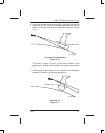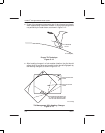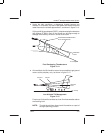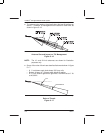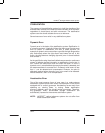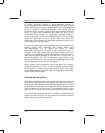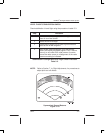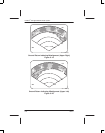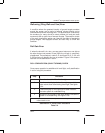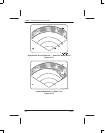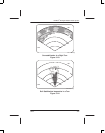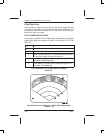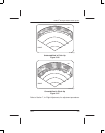
PRIMUS
R
660 Digital Weather Radar System
A28–1146–111
REV 2
Radar Facts
5-16
A vertical gyroscope contains a gravity–sensitive element, a
heavily dampened pendulous device that enables the gyro to erect
itself to earth gravity at the rate of approximately 2_/min. The pendulous
device is unable to differentiate between earth gravity and an
acceleration force. It tends to rest at a false–gravity position where the
forces of gravity and acceleration are equal. As long as the
acceleration force persists, the gyroscope precesses toward a
false–gravity position at the rate of approximately 2_/min. The radar
follows the gyroscope into error at the same rate. When the
acceleration force ceases, the gyroscope precesses back to true
gravity erection at the same rate.
Some vertical gyroscopes have provisions for deactivating the roll–
erection torque motor (whenever the airplane banks more
than approximately 6_) to reduce the effect of lateral
acceleration during turns. To some extent, stabilization error is
displayed in the radar image after any speed change and/or turn
condition. If the stabilization system seems to be in error because the
radar begins ground mapping on one side and not the other, or
because it appears that the tilt adjustment has slipped, verify
that aircraft has been in nonturning, constant–speed flight long enough
to let the gyroscope erect on true earth gravity.
When dynamic and acceleration errors are taken into account,
maintaining accuracy of 1/2 of 1_ or less is not always possible. Adjust
the antenna tilt by visually observing the ground return. Then, slowly
tilt the antenna upward until terrain clutter no longer enters the display,
except at the extreme edges.
Antenna Mounting Error
If the radar consistently displays more ground returns on one side or the
other during level flight over level ground, the antenna is probably
scanning on a slight diagonal, rather than level with the earth. The usual
cause is that the radar antenna is physically mounted slightly rotated
from the vertical axis of the aircraft. The procedure in table 5–3 and
figures 5–18, 5–19, and 5–20 can help you identify this type of problem.
On a vertical gyro equipped aircraft, the condition could be caused by
mistrim flying one wing low. The gyro erects to this condition and the
stabilization is not able to compensate.



